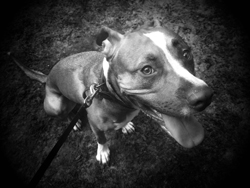 As crucial as dog training is for your pet’s social development, it’s also a task that can be extremely frustrating to commit to long-term as an owner. It’s perfectly normal to feel like you want to throw in the towel on days that are particularly hard for your dog to stay focused and listen, but that’s the biggest mistake you could make. Without consistency, dedication and patience, you can’t expect your dog to learn correct behaviors and get rid of the ones that drive you crazy (jumping, digging, barking, chewing, leash pulling, etc.) and can be dangerous (aggression, biting, growling, etc.). Addressing these unwanted actions and turning them around will take a while, but in the end, you’re sure to see it’s well worth the investment of your time. Below are a few tips for handling your dog’s training in a positive way, even when frustration begins to set in.
As crucial as dog training is for your pet’s social development, it’s also a task that can be extremely frustrating to commit to long-term as an owner. It’s perfectly normal to feel like you want to throw in the towel on days that are particularly hard for your dog to stay focused and listen, but that’s the biggest mistake you could make. Without consistency, dedication and patience, you can’t expect your dog to learn correct behaviors and get rid of the ones that drive you crazy (jumping, digging, barking, chewing, leash pulling, etc.) and can be dangerous (aggression, biting, growling, etc.). Addressing these unwanted actions and turning them around will take a while, but in the end, you’re sure to see it’s well worth the investment of your time. Below are a few tips for handling your dog’s training in a positive way, even when frustration begins to set in.
Sit Back and Breathe
Even if you’re the type to easily get all worked up, there are things you can do to keep your emotions in check and avoid displaying negative reactions that can really hinder the progress of dog training as well as make your pet fearful of the process. Without realizing it you may be tensing up and showing your dog just how unhappy you are with their performance, which doesn’t usually get the results you want to see. Deep breathing helps to release stress and calm your body during moments of frustration and bring you back to a relaxed and rational state of mind. Giving yourself a few minutes to consciously breathe through the difficult moments you come up against while training your dog will give you the strength to keep going and ease your posture back into a composed state.
Move On/Take a Break
Owners often make the error of repeatedly practicing the same trick or command again and again until they feel it has been accomplished. While you may be striving to end the training on a successful note, this can actually have the opposite effect on your dog and lead to boredom or a sense of failure, which probably won’t end up giving you the outcome you’d hoped for. If your four-legged friend just isn’t getting it or starts to show disinterest, it may be better for the both of you to either move on to something new or take a break and call it quits for the day before frustration takes over. You can always resume the same exercises the next day with a fresh approach.
Readjust Your Expectations
Frequently, the expectations that an owner places on their pet when starting dog training are unrealistic. Every dog is different and will learn at their own pace. What works for one may not work for another, or it may just take a little longer to fully grasp certain commands, tricks and behaviors. The best thing you can do for your animal when you find yourself getting impatient is to evaluate what you’re expecting from them and readjust those expectations to something that they can live up to. Less pressure gives your dog a better chance of performing at a higher level.
It’s not a bad idea to do some research on dog training before beginning this new venture with your furry companion. Acknowledging what has worked for others in similar situations and being prepared for it to take time and patience will enhance the experience and eliminate the frustration for both of you.